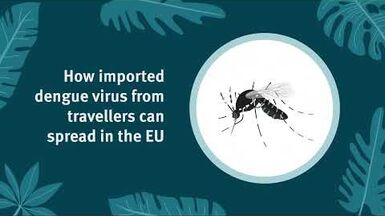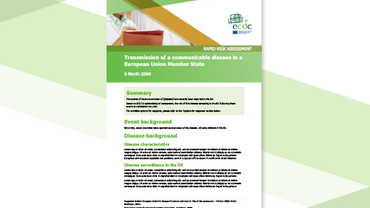Rapid Risk Assessment: Outbreak of Ebola Virus disease in West Africa – 11th update, 11 May 2015
This is the eleventh update of the rapid risk assessment on the outbreak of Ebola virus disease in West Africa. This update re-assesses the risk of importation of Ebola virus diseases to the EU and its potential transmission in the wake of Liberia becoming a non-affected country.
Executive Summary
Liberia is now Ebola-free and the cases in the other affected countries continue to drop. ECDC updates today its risk assessment following WHO declaring the end of the Ebola outbreak in Liberia - one of the countries that experienced intense transmission. The Ebola outbreak in West Africa has resulted in the unprecedented number of 26 683 Ebola cases leading to 11 022 deaths.
Liberia declared Ebola-free
On 9 May WHO announced Liberia free of Ebola virus disease (EVD) transmission as 42 days had elapsed since the last confirmed case. Declaring the end of the Ebola transmission in Liberia is a positive development, since it was one of the three countries most affected during the outbreak. Liberia witnessed widespread and intense transmission, with 10 564 persons infected, of which 4 716 died.
The situation in Guinea and Sierra Leone
The latest WHO data show that the number of cases reported in Guinea and Sierra Leone were decreasing in the last weeks and that the geographical area of transmission in both countries is shrinking.
ECDC risk assessment
However, as long as the transmission continues in Guinea and Sierra Leone, the risk of Ebola spreading in the region remains. The risk of importation to Europe is considered to remain very low, concludes today’s update of the ECDC risk assessment.
- The risk of EVD spreading between affected countries and into the countries sharing borders with Guinea and Sierra Leone will remain as long as transmission continues in these countries because of frequent cross-border movement of people and insufficient Ebola surveillance at some border crossings.
- The need for repatriation and medical evacuation should decrease as the epidemic continues to decline, and fewer international staff will be engaged in caring for EVD patients.
- The risk of EVD being imported into the EU remains very low and the risk of transmission from an imported case remains very low as a result of the range of risk reduction measures that have been put in place by the Member States and the affected countries.
- If a symptomatic case of EVD is imported to an EU Member State, secondary transmission to caregivers in the family and in healthcare facilities is possible.
- The significant drop of EVD cases in West Africa can only continue if control efforts are maintained: Surveillance, contact tracing and active case-finding should be strengthened, with the goal of reaching zero cases as soon as possible.





